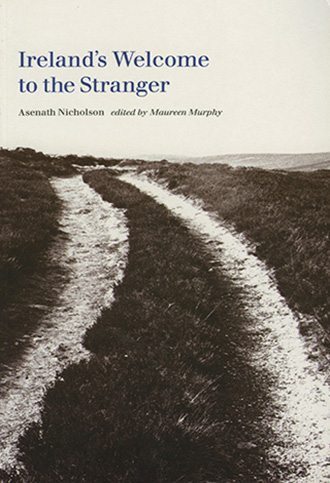
Ireland’s Welcome to the Stranger
Edited by:
Publication Date: November 2002
€19.00
In May 1844, the American educator and reformer Asenath Nicholson set out from New York on a fifteen-month visit to Ireland, determined to ‘investigate the condition of the Irish poor’. Nicholson travelled on foot through much of the island, reading the Bible to the local people and sharing their hospitality. She describes a rural society that, despite great poverty, received the American visitor with generosity and kindness. Nicholson’s rich and lively account of her travels is a unique glimpse of Ireland before the Great Hunger of 1845-52.
‘This is a wonderful read, and a great social history of Ireland just before the famine.’ – Customer review
ACCLAIM FOR ASENATH NICHOLSON’S ANNALS OF THE FAMINE IN IRELAND
‘Among the most pungent of first-hand accounts of the Famine … this welcome reissue, meticulously edited by Maureen Murphy, includes abundant and illuminating annotations.’ – Patricia Craig, Times Literary Supplement
‘Her narrative is extraordinarily vivid, with a style and a vocabulary surprisingly modern … a document of historical importance.’ – Richard Roche, Irish Times
‘Nicholson’s personality must have been as forceful as it was compassionate, and her experiences make for compelling reading. … this is a rich and fascinating example of famine literature, and Murphy has done a great service by making it more accessible to a contemporary audience.’ – Mary Donoghue McCain, New Hibernia Review
‘Vivid and wrenching’ – Connie Hendren Fitz, Irish Literary Supplement
‘An extraordinary testament.’ – John S. Doyle, Sunday Tribune
ABOUT THE AUTHOR
Asenath Nicholson (1792-1855) wrote Annals of the Famine in Ireland as well as Ireland’s Welcome to the Stranger (1847), a valuable record of Ireland on the eve of the Famine. Read more here.
ABOUT THE EDITOR
MAUREEN MURPHY is Professor of English at Hofstra University in New York. She is past President of the American Conference for Irish Studies, and has written extensively about Irish culture, folklore, literature and language. She edited Asenath Nicholson’s Annals of the Famine in Ireland (1851, reissued by Lilliput 1998).
| ISBN | 9781901866735 |
|---|
| Weight | 1 kg |
|---|---|
| Dimensions | 136 × 214 mm |
| Publication Date | November 2002 |
| Format | Paperback, 384pp |
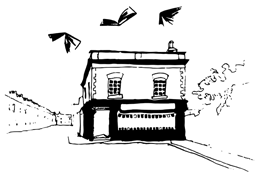
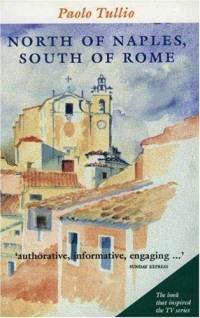
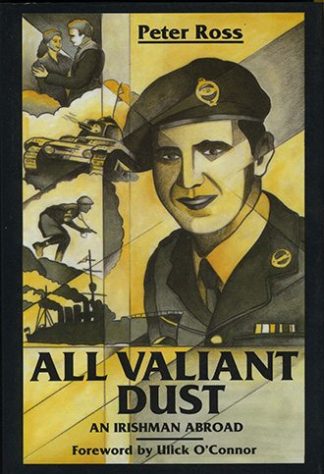

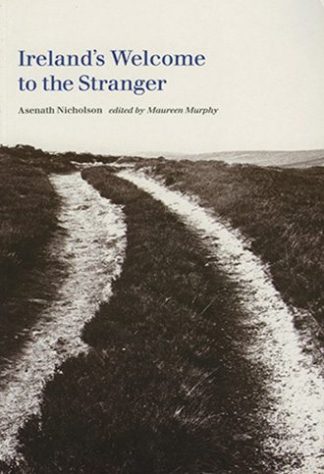
Lilliput Press –
“Asenath Nicholson was a Christian radical-pacifist, abolitionist, vegetarian, feminist (of sorts)-who toured Ireland in 1844 on the eve of the Great Hunger, with the twin goals of investigating the condition of the Irish poor, and of spreading the gospel among them. “Ireland’s Welcome to the Stranger” is her account of her time in the cabins and manor houses, and is a rare and (usually) sympathetic picture of pre-famine Ireland. Ms. Nicholson could be trying (quite judgemental, something of a prude) both to her contemporary hosts and her current readers, but in the end her honesty, indefatigability and generosity cover the bill. Of particular interest to this reader was her reporting of widespread hunger before the failure of the potato crop. I recommend this book highly to anyone interested in the period.” K KIERST
Lilliput Press –
“In 1844, Protestant New Yorker, Asenath Nicholson is not shy about her reason for going to visit and minister to the poor of Ireland, particularly the Roman Catholics. Most listen gratefully as she reads Scripture to them. Many share their poor cabins and pre- famine potatoes with her. But she also shares with readers the beauty of the country, as she travels across Ireland. One has to admire her stamina, as she was often on foot. Her humor, her blunt responses when dealing with pushy beggars, carriage drivers who expect double payment, wretched accommodations, or her sore feet reveal Asenath as more than a self- appointed Itinerant preacher. As an American woman traveling alone in mid-nineteenth century Ireland, she is an interesting figure.” E GEISLER
Lilliput Press –
“This remarkable widow from New York City left a priceless journal of her travels through Ireland on the eve of the great Famine. She traveled alone, walking much of the way and staying among the friendly tenant farmers who unfailingly shared what they had, be it a meal of potatoes or a special off-the-floor bed away from the livestock.
This is the stuff I wanted to know. The author writes:
“The habits of cooking and eating have scarcely varied for two centuries; their cabins, their furniture, have undergone little or no change; the thatched roofs, the ground floor, the little window, the stone or mud walls, the peat fire, the clay chimney, the wooden stool, the pot, and the griddle, have probably been the inheritance of many generations.”
They still had some potatoes, but the animals were raised for the English markets. She describes a typical meal in vivid detail, and said it never varied. After boiling a pot of potatoes over the fire, they’re drained into a basket. The cooking pot is then put under a board which serves as a table, and the potatoes are “poured” on top. No dishes or utensils were used – everyone eats with their hands. They didn’t even have salt.” ALICE WAKEFIELD